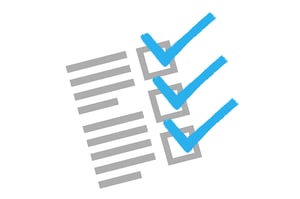An Overview of the Latest 510(k) Submissions Final Guidance
September 2019 saw the release of several final guidance documents relating to 510(k) submissions. One of the most utilized pathways by medical device manufacturers, the 510(k) has evolved quite a bit over time. The release of all these new documents speaks to FDA’s commitment to keeping this method of premarket submission up-to-date and aligned with agency directives. Taking a brief, high-level overview of each of these final guidance documents is extremely important for organizations looking to stay ahead of the ever-changing regulatory landscape.
Format for Traditional and Abbreviated 510(k)s
 No two organizations complete their product development and compliance activities the same way. While FDA does not want to get in the way of how the industry does its work, regulators do need a more standardized format as a base in order to reduce burden for both submitters and reviewers. The new guidance for formatting Traditional and Abbreviated 510(k)s offers a general plan that organizations can manipulate and work with according to their needs.
No two organizations complete their product development and compliance activities the same way. While FDA does not want to get in the way of how the industry does its work, regulators do need a more standardized format as a base in order to reduce burden for both submitters and reviewers. The new guidance for formatting Traditional and Abbreviated 510(k)s offers a general plan that organizations can manipulate and work with according to their needs.
The guidance document is more explicit in how it lays out what sections should be included in these types of 510(k)s, but it does not prescribe much beyond that. Submitters can still adjust content as necessary, but a basic structure for them to employ is in place. Beyond providing this outline, the guidance document furthermore breaks down each section of Traditional and Abbreviated 510(k)s.
The Abbreviated 510(k)
 Beyond releasing guidance on how to format an Abbreviated 510(k), FDA published final guidance on the program itself. As an optional pathway to demonstrate substantial equivalence, the Abbreviated 510(k) incorporates any number of special controls, consensus standards, and guidance documents in the submission process. This newly released guidance codifies the program and reinforces its parameters.
Beyond releasing guidance on how to format an Abbreviated 510(k), FDA published final guidance on the program itself. As an optional pathway to demonstrate substantial equivalence, the Abbreviated 510(k) incorporates any number of special controls, consensus standards, and guidance documents in the submission process. This newly released guidance codifies the program and reinforces its parameters.
The guidance document reviews information about what is expected for an Abbreviated 510(k) and requirements governing appropriateness to the manufacturer’s submission. It also lays out how summary reports can be used through this pathway rather than full breakdowns of your data.
The Special 510(k)
The Special 510(k) program is different from the Abbreviated pathway, as it requires any device submitted through it to be the submitter’s own legally marketed product. The final guidance document released for this program expands upon this point and provides a framework for determining applicability. It additionally provides examples of the design changes necessary for this program to apply, as well as recommendations for the content of a Special 510(k) submission.
Refuse to Accept Policy
 The last guidance document for 510(k) submissions in September 2019 relates to FDA’s Refuse to Accept policy. According to the agency, this policy is intended to assess “whether a premarket notification (510(k)) submission meets a minimum threshold acceptability and should be accepted for substantive review.” In other words, FDA leverages the Refuse to Accept policy in order to adequately establish whether submissions meet their acceptance criteria in a time-sensitive manner.
The last guidance document for 510(k) submissions in September 2019 relates to FDA’s Refuse to Accept policy. According to the agency, this policy is intended to assess “whether a premarket notification (510(k)) submission meets a minimum threshold acceptability and should be accepted for substantive review.” In other words, FDA leverages the Refuse to Accept policy in order to adequately establish whether submissions meet their acceptance criteria in a time-sensitive manner.
Looking at the final guidance for this policy, submitters can find information relating the principles that guide Refuse to Accept, related policies and procedures, and the interactions between regulators and themselves. In addition, there are a number of checklists given in the document’s appendices to help organizations better understand whether their submission will meet the criteria for any of the other 510(k) programs.
About Cognition Corporation
At Cognition, our goal is to provide medical device and pharmaceutical companies with collaborative solutions to the compliance problems they face every day, allowing the customer to focus on their products rather than the system used to create them. We know we are successful when our customers have seamlessly integrated a quality system, making day-to-day compliance effortless and freeing up resources to focus on product safety and efficacy.




